A Summary of Steve Jobs Timeline
In this blog post, we’ll be taking a look at the life of Steve Jobs. We’ll be discussing his early childhood, his time at Apple, his resignation, and his death. We’ll also be looking at how his legacy has continued after his death.
Mục Lục
Introducing Steve Jobs
Steve Jobs was one of the most influential people in the technology industry. He was the co-founder of Apple, and he also helped to create the iPod, iPhone, and iPad. Jobs was known for his innovative thinking, and he was always at the forefront of new technology.
He was also a master marketer, and he was able to take products that were completely new and make them into must-haves for consumers. In addition to his work in technology, Jobs was also a well-known philanthropist.
He donated large sums of money to charities, and he also worked to improve conditions at factories where Apple products were made. Steve Jobs was an incredible individual, and his legacy will continue to inspire people for generations to come.
But, who the hell is Steve Jobs? Let’s dig a bit deeper…
Following Steve Jobs Timeline
His Early Childhood Days – 1955
Steve Jobs was born on February 24, 1955, in San Francisco, to parents Joanne Simpson and Abdulfattah Jandali. He was later adopted by Paul and Clara Jobs with whom he moved to Mountain View, California.
As a child, Jobs was interested in engineering and electronics and took apart various items to see how they worked. He later attended Homestead High School in Cupertino, California.
A Chance Internship at HP – 1968
As a continuation of his interest in electronics, Steve Jobs called up Bill Hewlett, the co-founder of Hewlett-Packard, in search of spare parts to build a frequency counter. Impressed by Jobs’ attention to detail, he was granted the parts as well as an internship for the summer.
An Eventful College Life – 1970 to 1972
In the early part of 1970, Jobs’ meets the future Apple co-founder, Steve Wozniak, through a mutual friend and the two get along quite well despite their four-year age difference.
In 1972, Jobs enrolled at Reed College in Portland, Oregon. However, he dropped out after one semester as he felt that he was not getting anything out of it. Although, Steve Jobs did continue auditing calligraphy classes at Reed College which kept him interested.
Steve Jobs’ foray into big things – 1974
Steve Jobs then returned to California and began a brief stint as a technician at Atari, a video game manufacturer. While here, Jobs’ gets in touch with Wozniak and enlists his help in deciding on the hardware required for the prototype for a single-player game called Pong, which would later be known as Breakout.
In the summer of 1974, Jobs traveled to India with a friend to visit ashrams and experience Buddhism. Upon his return to the US, he began attending meetings of the Homebrew Computer Club with Steve Wozniak.
The Rise of Apple Computer Inc.- 1976
Wozniak had designed and built his own computer-cum-logic board which he called the Apple I. With Jobs’ help, they founded Apple Computer (now Apple Inc.) in 1976 and released their first product, the Apple I, later that year.
Apple’s third founder, Ronald Wayne, served as the group’s adult supervisor, drawing up the Apple logo, the partnership agreement, and the manual for Apple I. Afraid of the financial risks, Ronald Wayne gave up his shares for a sum of $2,300 but the Apple I went on to sell for $666.66 a piece by the end of the year.
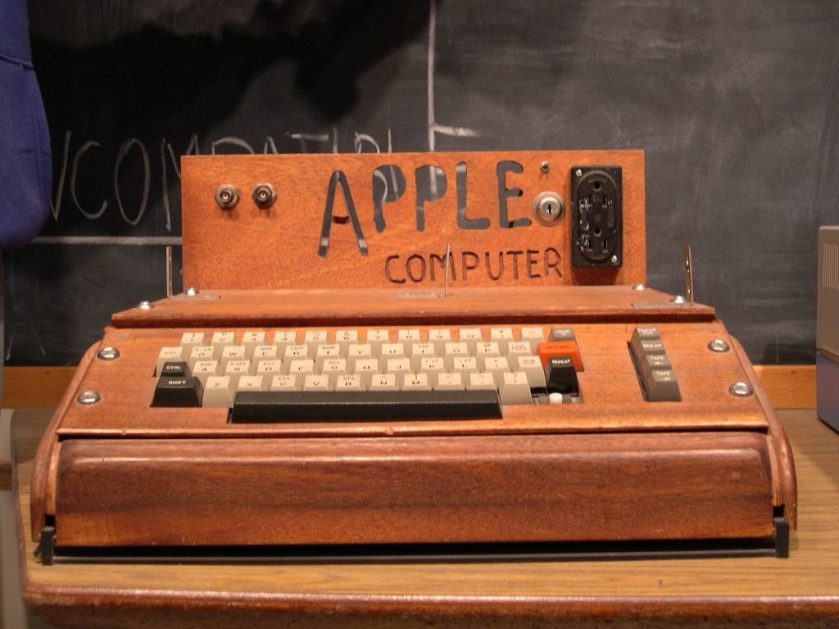
Do you want to be as successful as Steve Jobs?
The Beginning of a Successful Streak – 1977
On January 3, 1977, Apple gets incorporated as an official company , supported by a group of venture capitalists. The company’s second product, the Apple II, plastic encased with color graphics, was released in 1977 and became one of the first commercially successful personal computers. Sales naturally hit more than $1 Million per year!
The Birth of Lisa – 1978
Steve Job gets blessed with a daughter named Lisa, with then-girlfriend Chrisann Brennan, whom he initially denied paternity. Chrisann raises Lisa on welfare funds during which it takes time for Jobs’ to acknowledge paternity towards his child. He would later name the Apple computer Lisa in his daughter’s name.
An Insanely Great Ambition – 1979
While a lot was happening on the Apple front, Steve Jobs along with a few Apple engineers decide to head to a tech demonstration at Xerox Corp’s Palo Alto Research Center (PARC) where the introduction of new technology, the GUI (Graphical User Interface) was making waves.
Jobs and his colleagues were granted three-day access to the PARC facilities by Xerox on the condition that they are allowed to purchase stocks, a total of 100,000 Apple shares, at a pre-IPO price of $10 per share.
Apple Goes Public – 1980
On December 12, 1980, Apple went public and in just its initial public stock offering, managed to raise $110 million, more capital than any IPO since Ford in 1956! They made history that day, creating more millionaires than any other public offering had ever created before.
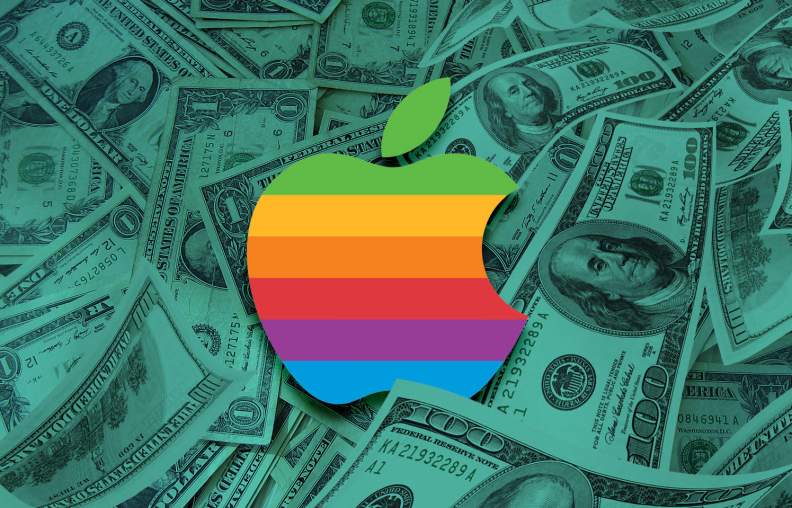
Apple Lisa and Its Eventual Failure- 1981
In 1981, Apple released the Lisa computer which was the first personal computer to offer a graphical user interface (GUI). Also, it was around this time that Jobs began working on a smaller lower-cost computer after a brief scuttle and infighting concerning the Lisa computer.
The two projects, one Lisa and the other the Macintosh project were solutions to the impending financial state of the Apple company. While Lisa eventually won the race, it didn’t make it big and instead incurred a huge commercial failure due to its limited software upgrades and high price tag.
Apple Gets a New CEO – 1983
After having made a grand entry into the Fortune 500 list of top companies in America, Apple got itself a new Chief Executive Officer in John Sculley, skillfully recruited by Steve jobs. Sculley was the then acting president of PepsiCo, Inc. and was whisked away by a shrewd comment by Steve, “Do you want to sell sugar water for the rest of your life?”
Macintosh Surfaces – 1984
In 1984, Apple launched the Macintosh which featured a GUI that was based on Xerox’s Star system. The Macintosh was unsuccessful initially but went on to become one of the most popular personal computers of all time.
Steve Jobs himself unveiled and introduced the Macintosh during the SuperBowl XVIII through the now famous $1.5 Million TV commercial directed by Ridley Scott and known today as a masterpiece of marketing.
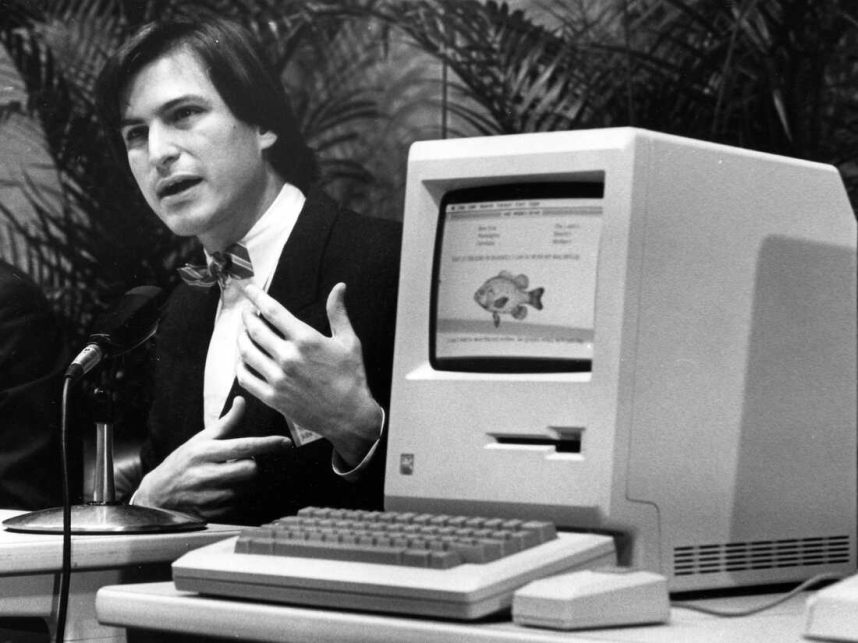
The Power Struggle and Steve Jobs’ Ousting From Apple – 1985
The conception of the Macintosh made Jobs’ uncompromising nature quite evident, from the design creation to its eventual launch. The resulting disagreements kept festering within the company and concerned Apple employees finally resulting in an open power struggle between Steve Jobs and Apple CEO John Sculley.
While the board of directors wanted Sculley to contain Steve and let not his ventures result in expensive forays, Steve jobs instead planned to oust Sculley from his position. When Sculley caught wind of this scheme, he colluded with the stakeholders and finally succeeded in removing Jobs’ from his managerial position.
Jobs then resigned from Apple and sold all but one Apple stock. Steve Wozniak also followed suit by de facto resigning from his high position and getting back to the Apple product development team to be more involved in the making than simply reigning.
Steve Jobs Tryst with NeXT and Pixar Animation Studios – 1986
After Apple, Jobs’ then founded NeXT Inc., a computer company that specialized in workstations for universities and businesses; however, NeXT failed to gain traction in the marketplace.
The NeXT computer was funded by a Japanese electronics company and was noted for its engineering design. However, it was a costly venture and was eventually eclipsed by more cost-effective competitor products.
Soon after, Jobs purchased The Graphics Group (later renamed Pixar) from Lucasfilm Ltd., for $5 million. Over the next 15 years, Pixar Animation Studios released some of the most successful animated films of all time including Toy Story (1995), A Bug’s Life (1998), Toy Story 2 (1999), Monsters Inc.(2001), Finding Nemo (2003), and more.
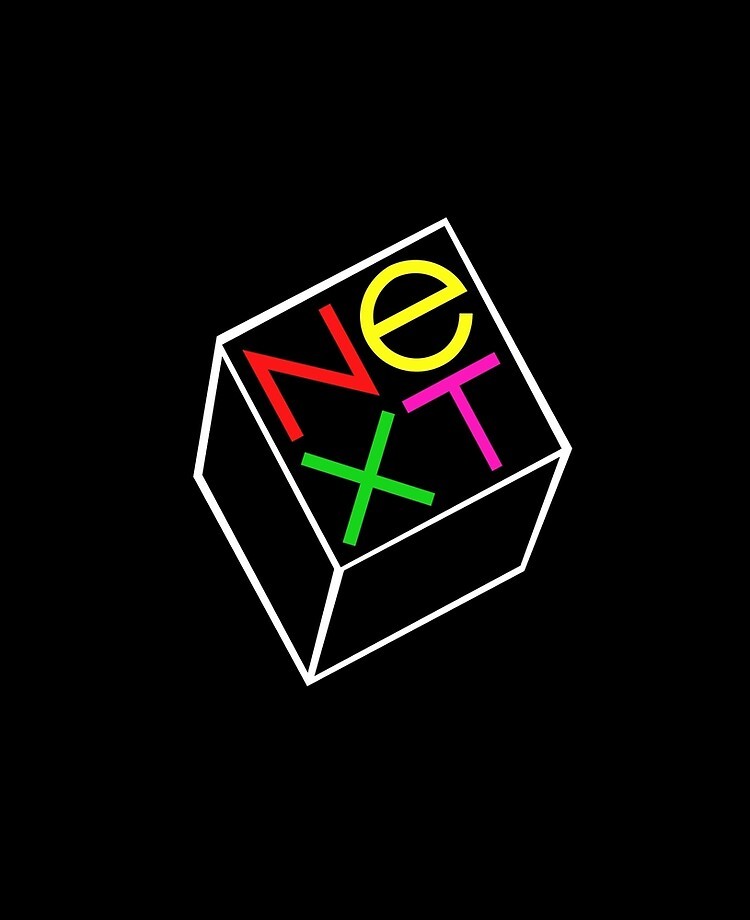
The Journey of NeXT and Apple continues – 1987 to 1995
In late 1988, NeXT released its first NeXT computer with a tag of $6,500 a piece. It was received as largely cost-prohibitive due to its advanced workstation, but those who could afford it became its staunch supporters.
Steve Jobs managed to market the NeXT products to scientific and academic sponsors due to the innovative technologies incorporated in its production like the built-in Ethernet Port, Mach Kernel, and the digital signal processor chip.
After a while, Jobs’ shifted his focus from developing whole computers to largely dealing with software at NeXT.
Meanwhile, in 1991, IBM Corp. and Apple ally to develop advanced software and new PC microprocessors. Apple’s PowerBook gets launched, establishing the standard norm for future laptop computers.
1993 saw the introduction of Apple’s pen-based computer, Newton. And although it was a huge financial disappointment when launched, it nevertheless paved the way for Apple’s products like the iPhone and iPad in the future.
A string of financial failures saw Apple changing hands from CEO John Sculley to president Michael Spindler. Then in 1994, Apple introduces the Power Macintosh Computers and decides to license its OS, thereby allowing its competitors to clone the Mac.
In 1995, the first Mac goes live; Microsoft releases its Windows 95 version; and Apple’s financial and existential struggle continues burdened with fierce competition, mistakes concerning customer demand, and component shortages.
Contrastingly, Pixar’s Toy Story hits the theaters with an IPO raising $140 million.
Back to Apple – 1996
The administration of Apple changes hands again, from Michael Spindler to Gil Amelio on February 2, 1996. After a thorough briefing on the admin management, Amelio learned that even prolonged efforts could not develop or produce an alternate for the aging Macintosh OS. Instead, he chose to purchase NeXT for $430 Million for the NeXTstep OS that Jobs’ and his team had developed.
This decision resulted in Jobs returning to Apple’s management while also laying the base for NeXT technology to become the foundation of the Mac OS X operating system.
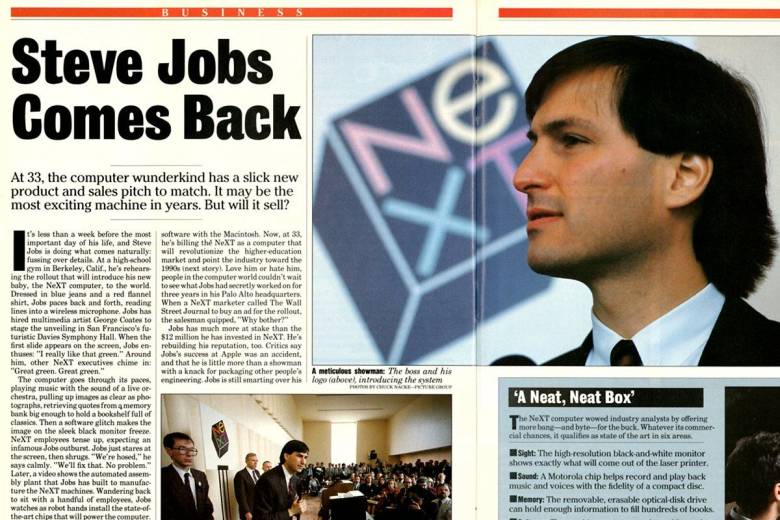
Take inspiration from Steve Jobs and gear up for success!
Work with Growth Hackers
An Interim Consultant for Apple – 1997
When the board of directors at Apple were dissatisfied with Amelio’s capabilities to make Apple financially stable, they turned to Steve Jobs for help. As the interim CEO of Apple, Steve Jobs first scrapped the contracts of cloning the Mac technology and announced Apple’s partnership with Microsoft.
Apple climbs new heights again – 1998 to 2000
Under Jobs’ leadership ,the company introduced various new products such as the iMac, iBook, iTunes, iPod, iPhone, iPad, App Store, iCloud, and more.
Reinventing Apple – 2000 to 2003
Steve Jobs announces his shift to permanent CEO at the 2000 Macworld Expo. The iPod began its evolution as the first portable digital audio player capable of storing up to 1000 songs and diversifying into the iPod Mini versions, iPod Touch, iPod Classic, Shuffle, the iPod Nano, and the iPhone.
2001 also saw the unveiling of the Mac OS X aimed at professionals and consumers alike. 2003 saw the launch of the iTunes Music Store to help people buy music online, albeit legally.
Steve Jobs battles health issues – 2003
Steve Jobs was diagnosed with pancreatic cancer in mid-2003 but put off surgery while seeking alternative medical approaches. In 2004, he underwent the Whipple surgery that seemed to have removed the tumor successfully. In Jobs’ absence, Apple was run by Timothy D. Cook, the head of worldwide sales and operations.
Steve Jobs returns to work – 2004
In February of 2004, Pixar terminates its contracts with Walt Disney Company only to be ultimately sold to Walt Disney in 2006. It is in late September that Steve Jobs returns to work after a brief rest from pancreatic surgery. The total revenue from Apple’s investments rises to $2.35 billion at the end of September.
The Worldwide Developers Conference – 2005 and 2006
Here, Steve Jobs announces the shift from using IBM’s processing chips to Intel Processors for their further innovations. Eventually, 2006 saw the introduction of the first Intel-based devices, the iMac and MacBook Pro with Intel Core Duo processors.
iPhone hits the world – 2007 and beyond
Steve Jobs introduces Apple’s first iPhone to the world at the Macworld Expo on January 9, 2007 with its official release scheduled on June 29, 2007.
The following years saw the release of further innovations like the iPod Touch, the App Store, the MacBook Air, MobileMe, Apple’s cloud offering, iPad, and more.
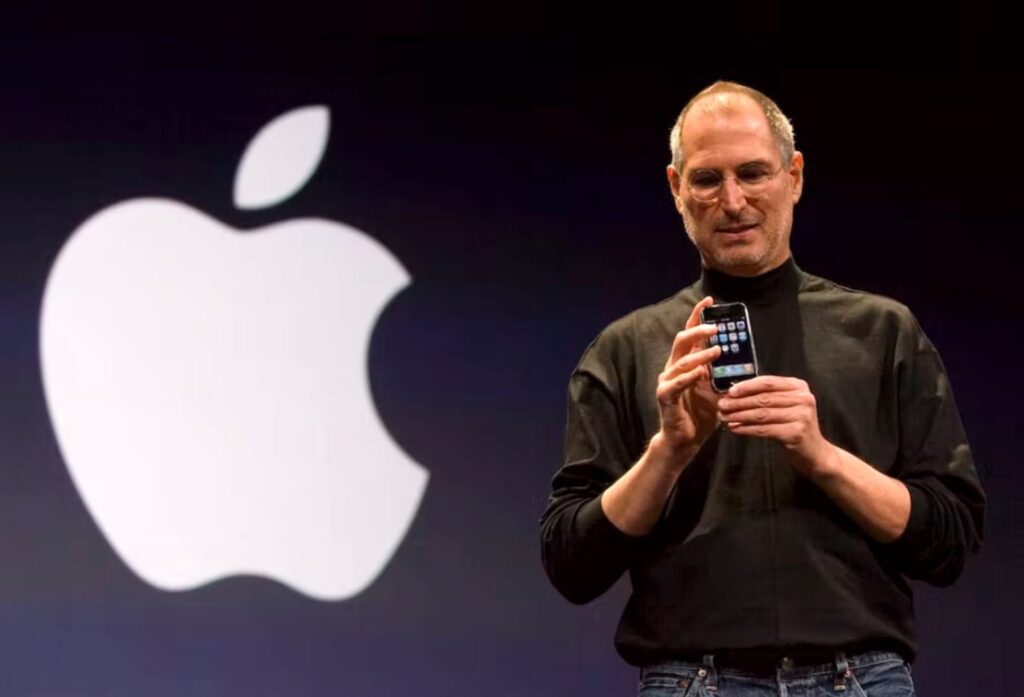
Steve Jobs’ Health Speculations – 2008
Steve Jobs was always secretive about his health concerns and never voiced them out loud. His drastic weight loss started raising public concerns which amounted to a simple common bug and hormonal imbalance issues. A few days after Steve Jobs declared he was fit to continue working, he took a few days off for a medical leave. It was later learned that Steve Jobs had undergone a liver transplant at the Methodist University Hospital in Memphis, Tennessee.
The End of a Great Legend – 2011
In January of 2011, Steve Jobs took a second medical leave of absence with no particular duration raising more speculations about his failing health. While he was still involved in major decision-making processes, Tim Cook was given the heads up to run day-to-day operations.
In August of 2011 Jobs finally resigns from his position as CEO of Apple, naturally replaced by COO Tim Cook. On October 5, 2011, Apple co-founder and former CEO Steve Jobs passed away at the age of 56 after a long battle with pancreatic cancer. His death was widely mourned with many tributes pouring in from around the world.
Final Thoughts on a Summary of Steve Jobs Timeline
Jobs was not only a visionary and pioneer in the world of technology, but he was also an incredibly successful businessman. Under his leadership, Apple became one of the most valuable companies in the world.
Jobs was also known for his showmanship and his ability to captivate an audience. His keynote addresses were some of the most highly anticipated events in the tech world. Even in death, Jobs continues to inspire people all over the world with his revolutionary ideas and vision for the future.
Do you also have high hopes and dreams for your business? Do you want to establish your brand as an industry leader by benefiting from the best practices, trends, and tools? If so, Growth Hackers is the solution you need.
Growth Hackers- We are an award-winning growth hacking agency that will bring you fast, sustainable and scalable growth. We go beyond consulting or coaching: we act as your growth partner and execute strategies that get results.
Reach out to Growth Hackers today and see just how we work so you can unlock the growth potential of your business.
Grow your Business Now
(Visited 2,459 times, 14 visits today)






